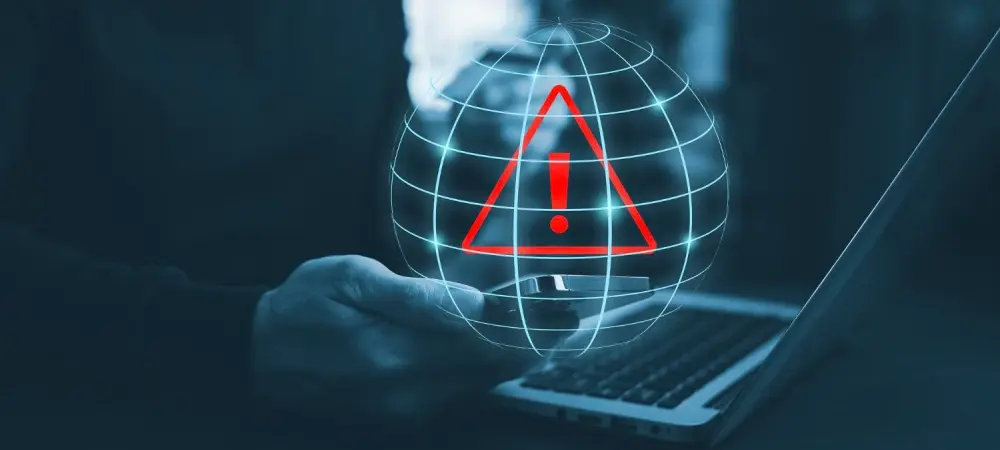In the fast-evolving landscape of cybersecurity, vendors are pushed to devise robust strategies to mitigate disruptions, ensuring that their services are reliable and secure at all times. A recent incident involving SentinelOne underscored the weaknesses that can surface during system transitions, affecting enterprise customers worldwide. This disruption was a direct result of a flaw in the software infrastructure, which erroneously altered critical network configurations, thereby restricting access to essential security management services. Despite this setback, endpoint protection services remained operational, demonstrating resilience, though the event reignited concerns around software integrity and the need for comprehensive business continuity plans.
SentinelOne’s Network Disruption: A Case Study
The Nature of Disruption
SentinelOne faced a significant service interruption marked not by a cyberattack but by an inadvertent software error, highlighting potential pitfalls in automated processes. The problem arose as the company transitioned its systems to a more advanced cloud-based architecture. During this shift, discrepancies in configuration led to incorrect settings being implemented, which deleted vital network routes and DNS resolver rules. This misconfiguration had a profound impact on enterprise users who depended on uninterrupted access to the management consoles for securing their operations. While endpoints remained protected, the inability to control and manage these systems posed operational challenges, highlighting vulnerabilities inherent in transitioning complex IT infrastructures.
Maintaining Endpoint Protection
Amidst this disruption, a critical lesson emerged regarding the robustness of endpoint protection designed by SentinelOne. While network connectivity faltered, these protective elements functioned without interruption, confirming that security for individual devices was not compromised despite organizational-level challenges. SentinelOne took decisive steps to assure clients of ongoing protection, reinforcing that vital security data was intact throughout the outage. This aspect of the incident underscores the critical importance of designing cybersecurity frameworks that maintain fundamental protective measures even when peripheral systems are disrupted. Additionally, SentinelOne’s swift reaction in informing stakeholders, especially federal clients using GovCloud, demonstrated a commitment to transparency and situational awareness, essential for maintaining trust in potentially volatile circumstances.
Lessons in Vendor Communication and Transparency
Importance of Communication Channels
The disruption experienced by SentinelOne serves as a stark reminder of the necessity for cybersecurity vendors to maintain strong and transparent communication channels. In the event of service outages, immediate and clear messaging can be pivotal in mitigating client concerns and providing reassurance. Analysts emphasize the benefit of utilizing independent public status pages, which can offer real-time updates and keep customers informed of developments. SentinelOne’s history of proactive communication, including during past industry incidents involving rival companies like CrowdStrike, highlights the value of swiftly addressing client queries and maintaining open lines of communication in crisis situations. Such strategies are vital not only for managing the immediate fallout from technical issues but also for reinforcing customer loyalty and confidence over the long term.
Risk Management and Future Preparedness
This incident has prompted a wider discussion about the future preparedness of cybersecurity vendors, urging a more comprehensive approach to risk management. Vendors are increasingly expected to develop robust strategies that encompass both anticipatory and reactive measures, ensuring that they can quickly adapt to unforeseen challenges. Protection plans must be regularly assessed and updated to reflect the evolving threat landscape and technological advancements. The significance of maintaining operational continuity cannot be underestimated, as enterprises rely heavily on these systems to safeguard their critical assets. Future success in this arena will depend largely on the capacity of vendors to prioritize continuous innovation and vigilance, ensuring that their offerings can withstand the pressures of an ever-changing digital environment.
Reflections on Industry Challenges and Outlook
Building Resilience Against Disruptions
The SentinelOne episode poses important questions about the resilience mechanisms embedded within cybersecurity solutions. Vendors are tasked with the challenge of fortifying their infrastructure against disruptions while simultaneously enhancing the protective capabilities available to end-users. An effective strategy involves balancing advanced technological tools with a commitment to transparency, ensuring that any shortcomings are promptly communicated and resolved. The broader cybersecurity sector can draw valuable insights from such incidents, using them as opportunities to bolster infrastructure resilience and refine response protocols. By learning from these disruptions, vendors can enhance their systems, aiming to prevent similar occurrences and ensure that they are adequately equipped to support their clientele even amidst unpredictable challenges.
Evolving Toward More Transparent Practices
In the rapidly changing realm of cybersecurity, vendors face the challenge of developing robust strategies to prevent disruptions and ensure that their services remain reliable and secure at all times. An incident involving SentinelOne has recently highlighted the vulnerabilities that can emerge during system transitions, impacting enterprise customers on a global scale. This disruption stemmed from a flaw in the software infrastructure that mistakenly altered crucial network configurations, thus limiting access to vital security management services. Even in the midst of this challenge, endpoint protection services continued to function efficiently, demonstrating the system’s resilience. Despite these operational aspects, the incident reignited concerns about software integrity and underscored the importance of having comprehensive business continuity plans in place. The event serves as a reminder of the constant vigilance required to uphold security standards and the necessity for vendors to adapt swiftly to maintain service integrity in an ever-evolving technological environment.

